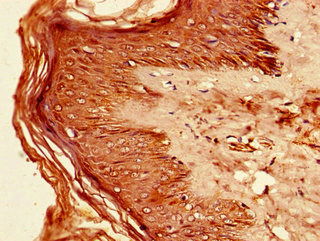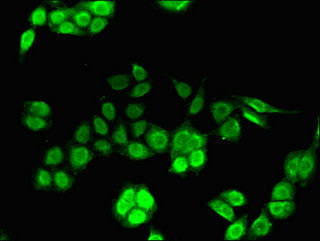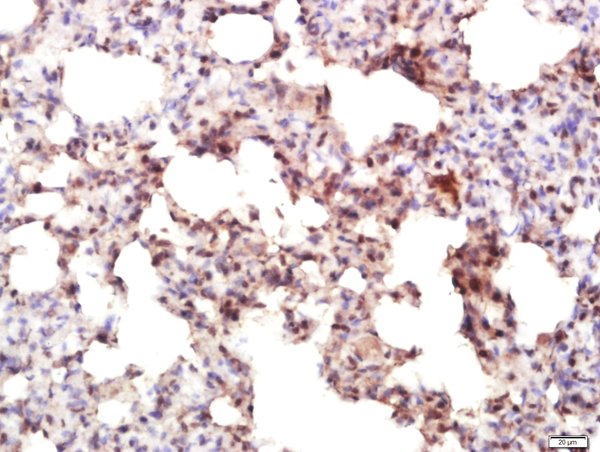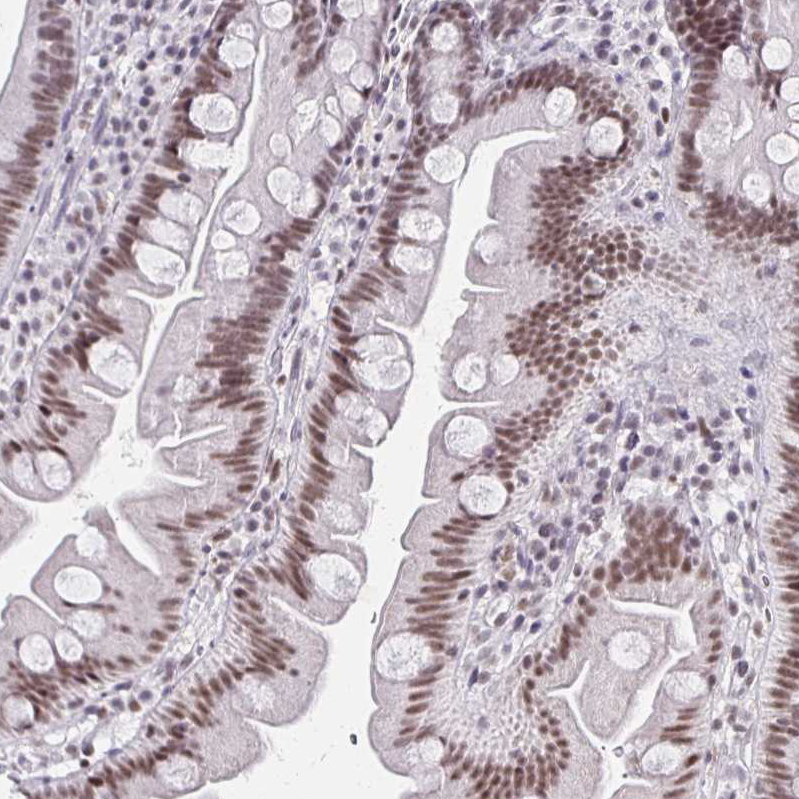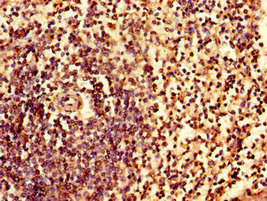
Immunohistochemistry of paraffin-embedded human spleen tissue using CSB-PA011822LA01HU at dilution of 1:100
IRF7 Antibody
CSB-PA011822LA01HU
ApplicationsImmunoFluorescence, ELISA, ImmunoHistoChemistry
Product group Antibodies
ReactivityHuman
TargetIRF7
Overview
- SupplierCusabio
- Product NameIRF7 Antibody
- Delivery Days Customer20
- ApplicationsImmunoFluorescence, ELISA, ImmunoHistoChemistry
- CertificationResearch Use Only
- ClonalityPolyclonal
- ConjugateUnconjugated
- Gene ID3665
- Target nameIRF7
- Target descriptioninterferon regulatory factor 7
- Target synonymsIMD39, IRF-7, IRF-7H, IRF7A, IRF7B, IRF7C, IRF7H, interferon regulatory factor 7, interferon regulatory factor-7H
- HostRabbit
- IsotypeIgG
- Protein IDQ92985
- Protein NameInterferon regulatory factor 7
- Scientific DescriptionKey transcriptional regulator of type I interferon (IFN)-dependent immune responses and plays a critical role in the innate immune response against DNA and RNA viruses. Regulates the transcription of type I IFN genes (IFN-alpha and IFN-beta) and IFN-stimulated genes (ISG) by binding to an interferon-stimulated response element (ISRE) in their promoters. Can efficiently activate both the IFN-beta (IFNB) and the IFN-alpha (IFNA) genes and mediate their induction via both the virus-activated, MyD88-independent pathway and the TLR-activated, MyD88-dependent pathway. Required during both the early and late phases of the IFN gene induction but is more critical for the late than for the early phase. Exists in an inactive form in the cytoplasm of uninfected cells and following viral infection, double-stranded RNA (dsRNA), or toll-like receptor (TLR) signaling, becomes phosphorylated by IKBKE and TBK1 kinases. This induces a conformational change, leading to its dimerization and nuclear localization where along with other coactivators it can activate transcription of the type I IFN and ISG genes. Can also play a role in regulating adaptive immune responses by inducing PSMB9/LMP2 expression, either directly or through induction of IRF1. Binds to the Q promoter (Qp) of EBV nuclear antigen 1 a (EBNA1) and may play a role in the regulation of EBV latency. Can activate distinct gene expression programs in macrophages and regulate the anti-tumor properties of primary macrophages.
- ReactivityHuman
- Storage Instruction-20°C or -80°C
- UNSPSC41116161

